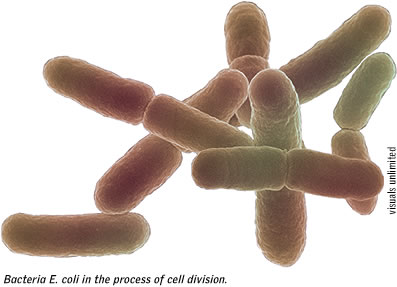In April 1953 James Watson and Francis Crick
wrote in the journal Nature: “This structure has novel features which are
of considerable biological interest.” In describing
the double helix of DNA, they established what has become
an axiom in molecular biology—it matters how things
are shaped.

That’s why Arun Malhotra, Ph.D., and his colleagues
are excited about their latest find, which was published
in Molecular
Cell in October 2006. They revealed the shape of RNase II, as
it appears in the commonly studied bacteria E. coli.
Ribonucleases are enzymes
that break up RNA, ribonucleic acid. RNA is a mediator between
DNA and proteins in a cell and also
makes up macromolecular machines
such as ribosomes that produce proteins in all cells.
“Once we have the structure, we can understand how the enzyme works and
how it will work on particular RNAs,” explains Malhotra, an X-ray crystallographer
who has been at the Miller School for eight years.
Understanding how ribonucleases,
or RNases, work is critical to understanding how RNA functions
in a cell. There can be as many as 20 different RNases
in a simple bacterial cell, but one family of RNases—RNR—plays a critical
role in breaking down messenger RNA. Messenger RNA carries instructions from
genomic DNA to make individual proteins. The ability to degrade particular RNAs
is vital for cells to quickly turn proteins off as they react to environmental
changes like sudden shifts in temperature or nutrition.
The other families of
RNases in E. coli have been well studied, with shapes described
for four of these enzymes by the Malhotra laboratory,
but not
RNR. Until now.
Malhotra’s team plans on studying the remaining member of the RNR family,
RNase R, next. RNase R is expected to be very similar to RNase II but may be
even more important.
“Often these enzymes
are almost like mechanical devices that act on things,” says
Malhotra. “They have domains that can move and grab other
molecules and so on.” Knowing how they work at a molecular
level is the key to one day being able to use them to treat disease. |